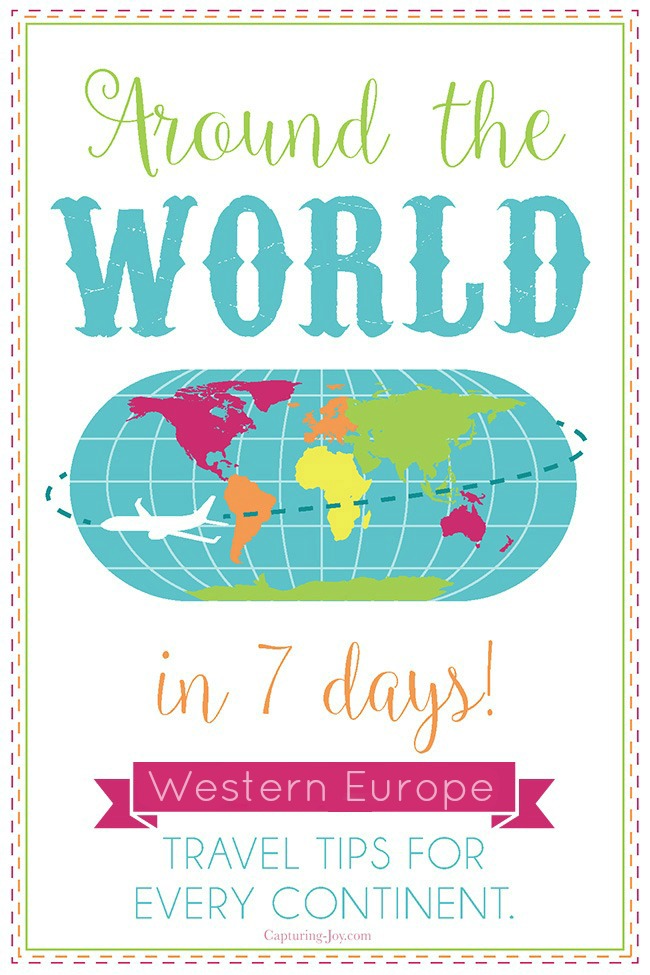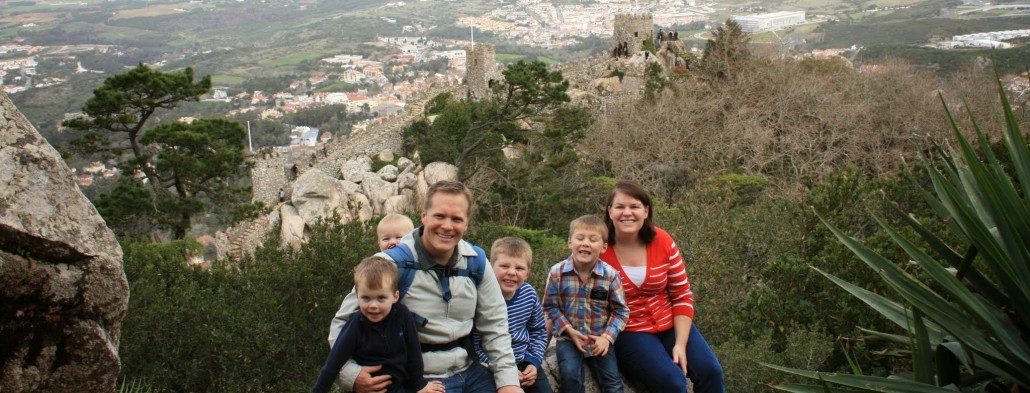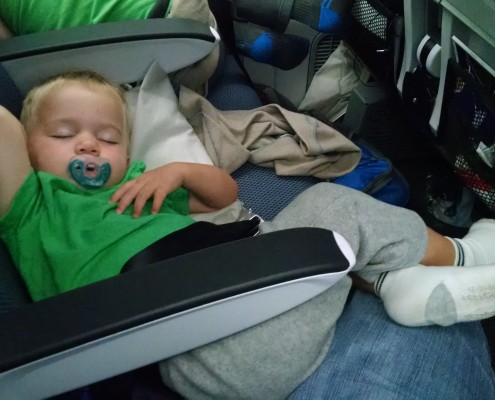As we Travel Around the World in 7 days, our next stop is to Western Europe. I’ve asked my friend Spencer from Family Explorers to share tips for traveling with little ones, too!

Europe has long been a favorite spot on earth for my wife and me, and in the past decade, it’s become a favorite spot for our growing family, as well! While many families with young children feel the time is not right for travel abroad, we were somewhat thrust into keeping travel a part of our lives, as both sets of grandparents ended up in far-off places—one set in Hawaii, the other in Portugal. We weren’t about to let our kids grow up without a strong connection to grandparents, so we got creative, figured out how to make frequent flyer miles work for us, and in the past few years have found ourselves (with four kids in tow) in Hawaii, Paris, Portugal, Switzerland, and Germany. Is it tiring? You bet. Is it an amazing opportunity to strengthen family ties and build memories to last a lifetime, doubly so!
So we launched Family Explorers, a website dedicated to helping families manage the ins and outs of travel abroad, with everything ranging from accommodations and museums to flights and budgets. Best of all? We’ve been able to book the flights for all three of our recent big trips with frequent flyer miles accrued through responsible credit card usage (and bonus offers), saving us tens of thousands of dollars and making the trips feasible without breaking the bank.
Thinking about planning a trip to Western Europe with your family? Check out these 10 tips for success!
- For countries in Western Europe, you will not need a travel visa if your stay is shorter than 90 days. You will, of course, need a passport, which can be a hassle, but with some advance planning, it’s totally doable. Generally, no supplementary immunizations are needed, either, so your children can breathe a big sigh of relief. Crossing borders within the European Union is painless, with essentially no passport checks and no hassles from one country to the next.
- If it’s your first trip to Europe with kids, and the magnitude of such an adventure seems a bit daunting but you still want to try, you might want to start with London. As my sister says, “Being able to speak the language makes all the difference in the world.” Granted, in most places in Europe, you’ll find English-speakers when you need them, but still, London is a great place to start. Just be aware of the exorbitant taxes and fees on flights to and from London and some ways you can keep them to a minimum.
- If you head to a country where English is not the native language, try to teach everyone in the family a few basic words and phrases before you go. Even if you can’t communicate in complete sentences, and the locals reply in English, they will appreciate your attempts to speak their language. We’ve found this especially useful in France, where they admittedly love their language and culture.

- There is so much history and culture in Europe to which we Americans are particularly tied. While I would not recommend a trip to Paris without a visit to some of its great museums, keep in mind that the littler members of our families will tire very quickly from such excursions. So be sure to balance time in museums with time spent outdoors. In Paris, we especially enjoyed our visits to the Arc de Triomphe and the Champ de Mars, a huge park located at the base of the Eiffel Tower.
- Sometimes trip plans go awry, in spite of our best preparations. Be prepared to roll with the punches, and to remember that for years to come, you’ll have something to hopefully laugh about, but at the very least, stories to retell at family gatherings. We’ve run into our share of troubles, such as when my family growing up somehow ended up at a tent city on the outskirts of Nairobi instead of the downtown Hilton.
- Western Europe is a popular place for Americans to visit (with good reason), and as such, can be quite crowded during the high season. Paris, Rome, and other big European cities can be particularly crowded (and hot!) in July and early August. This is also the time when lodging prices are high. If your family calendar can accommodate it, try to visit in the spring or fall. You’ll save money on flights and accommodations, and you’ll save time zipping to the head of the line. Christmas visits can be lovely, especially if you can hit a Christmas market in Germany, but be prepared for chilly weather and limited daylight hours.
- While it’s easy to pick a hotel from a list of familiar chains, you and your family might be better off with a vacation rental. Why? Because vacation rentals generally afford separate spaces for sleeping, room to play/relax at home, and kitchens for inexpensive, kid-friendly breakfasts. Additionally, you get a bit more of the local experience, making it more immersive and more memorable for the whole family. And if you’re on a budget, you almost always can get a better price on a rental than a hotel room. Just be sure you choose wisely, both on location and amenities.
- Don’t neglect the sites outside the big cities. Europe has excellent train systems, and getting out of London to visit a castle or out of Paris for a visit to Versailles or Monet’s Giverny can be a great break from the hustle and bustle of city life. You might even consider renting a car on the edge of town (most large train stations have rental agencies, which keep you from having to navigate a car through the center of the city) and heading to some of the less accessible places. We loved our couple of days on the beaches of Normandy, both for the fun and the history.
- Europe is pretty accessible from the U.S., with non-stops from most major U.S. cities to London and Paris, and several options to Madrid, Rome, Lisbon, Frankfurt, Dublin, and plenty of others. If you’re using frequent flyer miles to get there, you can generally get a ticket for 60,000 miles, which you might be able to accrue with one very good credit card offer. Don’t forget to make credit cards work for you, and not the other way around! For more info on doing this, check out Fly the Family for Free, available in print and eBook.
- Crossing time zones can be rough, especially on kids, but it can work to your advantage when heading to Europe. While you want to be sure your kids get enough sleep while traveling (cranky kids can really put a damper on tourism), shifting their schedule a bit later than it would normally be can be beneficial for experiencing your destination in the evening, seeing a show, or going on a river cruise. This works well when traveling from the U.S. to Europe because your body will naturally be on a later schedule. One more sleep tip: don’t be afraid to head back to the hotel or rental mid-afternoon for a nap or some downtime.
Ready to head to Europe? Even if it seems tricky, it’s not all that more difficult than a trip across the U.S. With some advance planning, some prep for the family, and some good use of credit cards and frequent flyer miles, you can be off to Paris or Rome before you know it!








